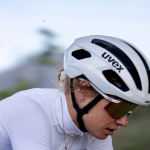Billabong International Limited said it is again reviewing its business for possible cost cuts and a recapitalization in the wake of a significant drop in retail sales in November.
Billabong's brands include: Billabong, Element, Von Zipper, Honolua Surf Company, Kustom, Palmers Surf, Nixon, Xcel, Tigerlily, Sector 9, DaKine and RVCA.
- The Group’s European company owned retail stores, which were showing slightly positive comparable store sales growth to the end of October, declined sharply in November after a positive start to the month and this downward trend continued into the first week of December.
- With the lower sell through from the late start to winter and limited snowfalls, European retailers are pushing back early summer December deliveries to later in the year. While it is expected the Group will deliver the majority of these summer forward orders in the second half, the later deliveries may result in lower in-season repeats.
- In Australia, while there was some sales improvement following the November fall in interest rates, sales in the latter part of the month were significantly affected by unseasonably cold summer weather, particularly in New South Wales. The poor weather has continued into December and is reflected in same store sales declines.
- With respect to North America, the Group’s business in the USA has continued to perform well, with good like-for-like sales growth in October and November but turning negative in the first two weeks of December on growing global concerns about Europe. Challenging trading conditions remain in Canada, in both wholesale and retail.
While the Group’s trading results remain heavily subject to performance across the balance of the critical December trading period, the company anticipates reported EBITDA for the six months ending 31 December 2011 to be in the range of $70 million to $75 million (compared to $94.6 million in the pcp). On a constant currency basis, the company anticipates this EBITDA range would be approximately $4 million higher, with the range on an ‘as reported’ basis being adversely impacted in particular by the stronger AUD against the USD and Euro for the six month period ending 31 December 2011 compared to the pcp.
While the Group remains focused on reducing working capital and maximising cash flow from operating activities, the poor macroeconomic and trading environment is dampening the Group’s ability to clear excess inventory. In light of the shift in retail consumer and wholesale customer spending patterns, and while significant costs have already been taken out of the business over recent years, the company is undertaking a further operational review of the business to ensure additional appropriate reductions are made to overheads in the current financial year and into the 2012-13 financial year.
In addition, a strategic capital structure review is under way with the company’s advisor, Goldman Sachs. This review includes an assessment of all potential alternatives to strengthen the company’s capital structure in light of the existing operating environment and the risk for further deterioration. The review encompasses all of the company’s balance sheet alternatives. It would be premature to speculate on the most likely outcome of this review and, while nothing has been ruled out, raising equity is not the preferred path at this time as the company is reviewing other options.
Despite the extremely challenging external trading environment, the company continues to believe in the fundamental mid to longer term potential of its previously-stated strategy, in particular to enhance its direct-to-consumer business model, grow the vertical margin contribution from company owned brands in acquired retail stores and continue the rapid expansion of its online businesses.















